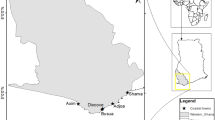Abstract
The Northwest Coast (NWC) halibut hook is both an indigenous fishing technology, and an iconic object of rich cultural history. This study utilizes biological, statistical, ecological, and ethnographic data to examine the function(s) of NWC halibut hooks, and how and why dimensions are changing through time. Analyses of measurements from 143 specimens, dated from 1867 to 2015, suggest a statistically significant increase in overall length through time. These findings support the hypothesis that as the use of modern fishing technologies became more prevalent, and traditional NWC halibut hooks largely lost their original function (i.e., catching halibut), dimensions changed to favor decorative or symbolic content over utilitarian/functional requirements. Archival data, peer-reviewed literature, and ethnographic interviews with contemporary carvers and fishers support the assertion that average dimensions of early NWC halibut hooks targeted fish between 20 and 100 lbs., thus promoting sustainability of Pacific halibut breeding populations. Whether the hooks were designed intentionally to promote sustainability or this size of fish was targeted for other reasons remains an open question.

Photo by author. Reproduced with the artist’s permission

Photo courtesy of Katrina Garbisch

Photo by author

Photo by author

Photo courtesy of the Gallery of Alaska, University of Alaska Museum of the North

Photo by author

Photo by author

Photo courtesy of M. Catalano, Auburn University

Reprinted by permission of the publisher, Douglas & McIntyre

Photo courtesy of Kathy Dye, Sealaska Heritage Institute. Reproduced with the artist’s permission

Photo courtesy of the artist

Photo courtesy of Hamilton Gelhar. Reproduced with the artist’s permission






Similar content being viewed by others
Notes
Due to limited time, my goal was to photograph each specimen in a way that would allow measurement directly from the image, i.e., from as close to perpendicular as possible (ninety degrees above the object), with a scale ruler in each image (raised to the level of the object to avoid issues of parallax).
Measurements were based upon intuitively designated points corresponding to a labeled schematic: AB is a proxy for overall length; DH represents the distance between the sharp tip of the barb (D) and the base of lower arm (H); AB represents the length of the “lower” arm, because when submerged the halibut hook is inversed; AC represents the “upper” arm.
References
Donald L. (1997). Aboriginal slavery on the northwest coast of North America, University of California Press, Berkeley.
Emmons, G. T., & De Laguna, F. (1991). The tlingit Indians. Seattle; New York: University of Washington Press; American Museum of Natural History.
Jonaitis A. (1981). Tlingit halibut hooks: an analysis of the visual symbols of a rite of passage, American Museum of Natural History, New York.
Niblack, A. P. (1888). The coast Indians of Southern Alaska and Northern British Columbia. In Indians of the Northwest Coast. Report of National Museum. Washington, D.C.
Pritzker B. (2000). A native American encyclopedia: history, culture, and peoples, Oxford University Press, Oxford; New York.
Ratner, N. C., & Holen, D. L. (2007). Traditional ecological knowledge: applying principles of sustainability to wilderness resource management. In USDA Forest Service Proceedings, pp. 45–50.
Stewart H. (2006). Indian fishing: early methods on the northwest coast, University of Washington Press, Seattle.
Sturtevant W. C. (1978). Handbook of north American Indians vol 7, Washington, Smithsonian Institution.
Swanton J. R. (1975). Contributions to the ethnology of the Haida, AMS Press, New York.
Acknowledgements
For their generous collaboration and support I offer my most sincere thanks to Jon Rowan, Leslie Isaacs, Vaughn Skinna, Aldona Jonaitis, Robin Wright, Tommy Joseph, Donald Gregory, Arthur and Louanna Nelson, Ed. E. Bryant, Greer Zerboni, Candace Greene, Nancy Parezo, Emily Buhrow, Dave Rosenthal, Roger Topp, Angela Linn, Kathy Dye, Jan Timbrook, Greg Wilson, and Francis “Amps” Carle.
Author information
Authors and Affiliations
Corresponding author
Ethics declarations
Funding
This study was funded by The Smithsonian Institution and the National Science Foundation.
Conflict of Interest
The author declares that he has no conflict of interest.
Rights and permissions
About this article
Cite this article
Malindine, J. Northwest Coast Halibut Hooks: an Evolving Tradition of Form, Function, and Fishing. Hum Ecol 45, 53–65 (2017). https://doi.org/10.1007/s10745-016-9884-z
Published:
Issue Date:
DOI: https://doi.org/10.1007/s10745-016-9884-z




